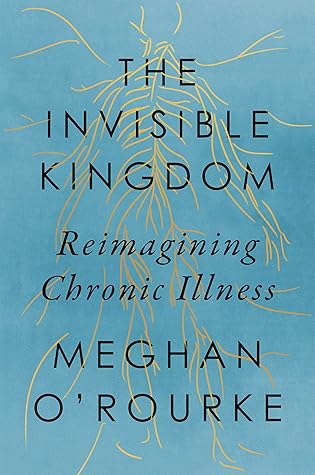More on this book
Community
Kindle Notes & Highlights
Read between
December 11 - December 13, 2022
To have a poorly understood disease is to be brought up against every flaw in the U.S. health care system; to collide with the structural problems of a late-capitalist society that values productivity more than health; and to confront the philosophical problem
of conveying an experience that lacks an accepted framework.
My fatigue felt like a problem with me—something about my very being. I worked too hard, but without enough discipline; I exercised, but I ate junk food; I was sloppy where I should be ascetic. When I felt off, it was my fault, a sign of some internal weakness, a lack of moral fiber, a crack running through the integrity of my being.
sphenopalatine ganglioneuralgia (also known as “ice-cream headache”)?
the four humors (blood, yellow bile, black bile, and phlegm),
Autoimmune diseases have biological markers, but they come and go, and patients’ flares can be exacerbated by stress. Such diseases require us to think about illness in a more complex way than we usually do, a more complex way than twentieth-century medicine did, since it was, at heart, based on the idea that all bodies respond roughly the same way to infection. That perspective is turning out to be oversimplified.
find the microbe and kill it.”
“The tendency in many parts of medicine is, if we can’t measure it, it doesn’t exist, or the patient is cuckoo.”
This new paradigm holds that disease is a multipronged phenomenon—an interaction among pathogens, the immune system, and the “environment,” a term that can refer to a person’s microbiome or exposure to such things as toxic chemicals and trauma. (Both have been shown to affect the immune system.)
Their fierce response was a classic example of what is known as the “Semmelweis reflex”—the reflexive rejection of new paradigms in medicine.
One study found that H. pylori may even play a positive role in human health: adults without it in their stomachs are more likely to have suffered from asthma as children.
In the meantime, modern medicine’s stigmatization of patients who lack clear-cut test results continues to be a chief shortcoming of the American health care system, which, in its understandable embrace of authoritative answers, struggles to acknowledge what it does not know.
Knowledge brings the hope of treatment or cure. And even if there is no cure, a diagnosis is a form of knowing (the word “diagnosis” derives from the Greek gignōskein, “to know”) that allows others to recognize our experience and enables us to tell its story. I felt acutely the absence of a story I could tell others. Without a story, who—or what—would help me get better?
(Doctors tend to interrupt patients after eleven seconds of speech.)
Contemporary medicine prides itself on patient-centered care, but it is startlingly inattentive—even actively indifferent—to patients’ emotional needs. For patients with chronic illness, with its upheaval of life, this indifference poses a particular challenge.
Doctors prefer acute care, David Cutler, a Harvard economist who specializes in health care reform, told me, because it is easier to work with a patient in a mechanistic way, to anesthetize someone, say, in order to fix a broken bone.
Many studies have suggested that emotional care—interpersonal warmth—has a measurable effect on patients’ outcomes. For example, the incidence of severe diabetes complications in patients of doctors who rate high on a standard empathy scale is a remarkable 40 percent lower than in patients whose doctors do poorly on the empathy scale,
“What Kaptchuk demonstrated is what some medical thinkers have begun to call the ‘care effect,’ ” Nathanael Johnson wrote in Wired in 2013, “the idea that the opportunity for patients to feel heard and cared for can improve their health.”
“These habits of speech contribute to a presumption that the responsibility for failure lies with the patient.” By making the patient the problem, clinicians at least still have faith in their own ability to help.
“We call it the doctor-patient relationship, but in many ways it’s the doctor-down-to-the-patient relationship,” he told me.
The central issue is that physicians tend not to see women’s self-reports of illness symptoms as valid. When a female patient complains of pain or discomfort, her testimony is viewed as a gendered expression of a subjective emotional issue rather than a reflection of a “hard” objective physiological reality.
The British philosopher Miranda Fricker uses the term “testimonial injustice” to describe the way that prejudice against a group can unfairly undermine the credibility of an individual within it.
“No man is an island, entire of itself; every man is a piece of the continent, a part of the main. . . . Any man’s death diminishes me, because I am involved in mankind, and therefore never send to know for whom the bell tolls; it tolls for thee.”
communication-skills training in medicine is “primitive.”


